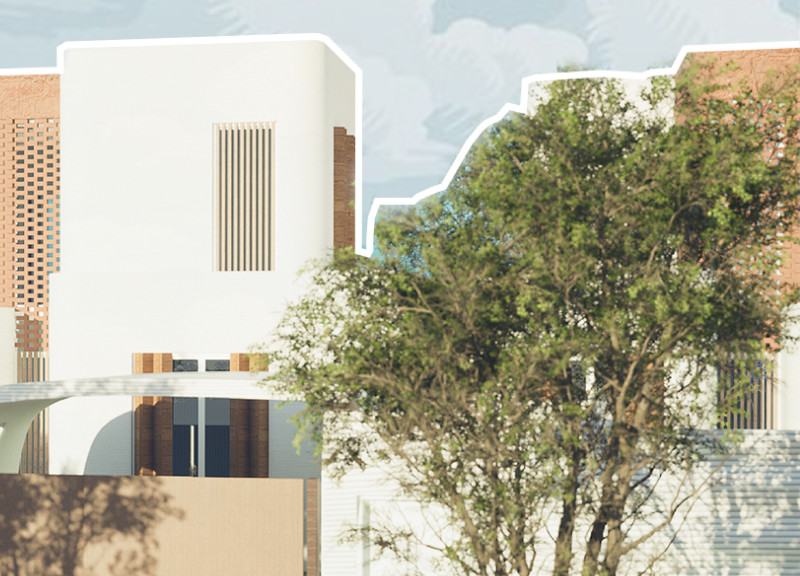5 key facts about this project
At its core, the architectural design incorporates organic forms that harmonize with the surrounding environment, integrating seamlessly into the landscape. The exterior facade showcases a blend of natural materials, such as timber and stone, which not only enhance the visual appeal but also provide thermal efficiency and structural integrity. Large glazing elements are strategically placed to maximize natural light while offering panoramic views of the surroundings, bridging the indoor and outdoor environments. This focus on transparency creates a welcoming ambiance, inviting visitors to explore the facility.
The layout of the project is characterized by an open floor plan that prioritizes flexibility and movement. The design incorporates modular spaces that can easily be reconfigured to suit a variety of functions, reflecting a modern understanding of dynamic use. This adaptability is further supported by movable walls and multifunctional furniture, which enhance the versatility of each area within the building. Each space is designed with user experience in mind, ensuring that functionality does not compromise aesthetic quality.
Sustainability is a guiding principle in this architectural design, with a commitment to reducing the project's environmental footprint. Efficient energy systems, including solar panels and rainwater harvesting techniques, are integrated into the design, underscoring a dedication to renewable resources and responsible energy use. The choice of locally sourced materials not only reduces transportation emissions but also supports the local economy, promoting a sense of community ownership within the project.
Unique design approaches are evident throughout the project, particularly in the incorporation of biophilic design elements. By prioritizing natural light, incorporating living green walls, and utilizing natural materials, the design fosters an environment that enhances well-being and productivity. Outdoor spaces are thoughtfully integrated into the overall plan, providing areas for relaxation and contemplation while encouraging users to connect with nature.
Another notable aspect of the project is the attention to acoustics, ensuring that each area maintains a balance between functionality and comfort. Sound-absorbing materials are strategically placed in communal spaces, allowing for conversation and social interaction without overwhelming noise levels. This thoughtful consideration of acoustics reflects a broader understanding of human experience within architectural design.
In exploring this project, readers are encouraged to delve into various presentation elements such as architectural plans, architectural sections, and architectural designs that offer deeper insights into the innovative ideas and practical solutions embodied within the project. The focus on community connection, environmental responsibility, and user experience sets this design apart, making it a noteworthy example of modern architecture. By examining these elements, one can fully appreciate the comprehensive approach taken to create a space that is as functional as it is architecturally inspiring.
For those interested in a comprehensive understanding of the architectural concepts and design methodologies employed, further exploration of the detailed presentations surrounding the project is highly recommended.


 Mohammed El Amine Chabani
Mohammed El Amine Chabani 























